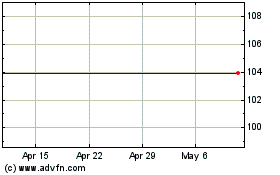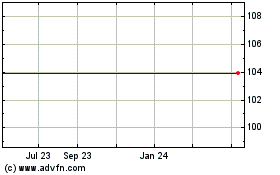Outdated Business Management Practices Block Flexible Work Styles, Hinder Competitiveness
June 27 2011 - 8:00AM
Business Wire
While 63 million Americans hold jobs that could be done at home,
fewer than 3 million actually work away from the office most of the
time, according to research commissioned by Citrix Online, a
division of Citrix Systems, Inc. Conducted by Telework Research
Network, the research analyzed statistics from public and private
sources, such as the U.S. Census Bureau and Bureau of Labor
Statistics, to build a complete image of the state of virtual
working in the United States. The results paint a dismal picture.
Employee demand to workshift far outstrips their opportunity to do
so, highlighting the persistence of outdated management practices
and antiquated attitudes towards oversight and eligibility.
New Findings from “The State of Telework in the
U.S.”
- Perk vs. Standard Practice –
Work from home, telecommuting and flex work is still a perk versus
an accepted business practice.
- A typical workshifter is 49 years old,
college educated and in a management, senior employee or
professional role.
- Over 75% of employees who work from
home earn over $65,000 per year, putting them in the upper 80
percentile relative to all employees.
- Demand Outpaces Supply
- 63 million U.S. employees hold jobs
that could be done at home at least part of the time, yet fewer
than 3 million, 2.3% of the population, get the chance to work
virtually on a regular basis.
- Almost 80% of all employees would work
from home if they could.
- Will Trade Money for Freedom
- More than one third of non-teleworkers
surveyed by WorldatWork would take a pay cut to be able to have
more independence in where and how they work.
- Commute Time Is Not a Factor
- The study found no correlation between
cities with the most congestion or longest commute times and number
of workshifters.
- The San Diego metro area has the
highest concentration of people who work at home, 4.2%, while
Detroit and Houston have the lowest, each with 1.8%. The New York
metro area rounds out the bottom three, with 2.1%.
Why It Matters
- As business becomes more global and
workforces more dispersed, companies will have little choice but to
implement virtual work practices. Those who operate that way now
will have a significant head start, not to mention the pick of
talent from around the globe, instead of just their own
backyard.
- Ongoing concerns about the global
economy are causing companies to keep a tight grip on hiring. For
growing companies, this can result in more work for those in
employment, creating the need to work longer. Virtual working
offers people a better work-life balance by letting them take
charge of how they manage competing priorities in a given period of
time.
- Workshifting, the ability to work where
it is most optimal rather than confined to an office or specific
location, is much more than a perk; it is a business advantage.
Implemented correctly, it is a means to diversify the organization,
attract new talent, increase productivity and enhance
sustainability.
- Despite being the birthplace of much of
the technical innovation that makes “work anywhere” possible, the
U.S. is stubbornly lagging behind other parts of the world when it
comes to workshifting: in Canada, 3.2% of the population teleworks
regularly, and in the United Kingdom the figure is even higher at
5.6%, compared to just 2.3% in the U.S.
- Mobile and collaboration technology
exists to enable people to work anytime, anywhere. Outdated
management thinking is often the only serious obstacle to more
flexible and virtual work practices.
Quotes
“The reality is that managers simply don’t trust their employees
to work untethered. That’s not going to change until companies
start measuring performance based on results, rather than the
number of hours someone sits at their desk. Management gurus have
been telling us for decades that results-based management is the
key to maximizing employee potential; and it’s true whether
employees are a hundred feet or a hundred miles away.”
Kate Lister, president, Telework Research
Network
“The benefits of workshifting have been known for quite some
time now, so it’s easy to assume that everyone is doing it these
days, but the truth of the matter is pretty sobering and more than
a little disappointing. Despite much evidence to the contrary, it
seems old-fashioned notions that work must be seen to be done still
prevail. And by offering workshifting merely as a perk for
management, companies are missing out on some of the biggest
benefits of flexible working.
“Come on America, something needs to change – and that something
is senior management attitudes towards new work styles. It’s time
to join the 21st century and focus on work as a thing we do, not a
place we go. With that mindset, every business could become more
dynamic and competitive overnight.”
Brett Caine, President, Citrix
Online
Other Resources:
Report: Workshifting – The Bottom Line
Infographic: The Dollars and Sense of Workshifting
Infographic: Are You a Happy Worker or a Sad (Disengaged)
Worker?
Blogs: Workshifting.com, TeleworkResearchNetwork.com
Twitter: @workshifting
About the Research
The research was conducted by the Telework Research Network, an
independent research and advisory firm that specializes in modeling
the economic, societal, and environmental benefits of telework and
workplace flexibility for companies, government community leaders.
New Ways of Working (NewWOW) was a co-sponsor of the study. Data
from the following sources was compiled, compared and analyzed:
American Community Survey PUMS data, conducted by the U.S. Census
Bureau; American Time Use Survey and National Compensation Survey,
conducted by the Bureau of Labor Statistics; Telework 2011,
Telework Trendlines and the 2011 Survey on Workplace Flexibility,
conducted by WorldatWork
About Citrix Systems, Inc.
Citrix Systems, Inc. (NASDAQ:CTXS) is a leading provider of
virtual computing solutions that help companies deliver IT as an
on-demand service. Founded in 1989, Citrix combines virtualization,
networking, and cloud computing technologies into a full portfolio
of products that enable virtual workstyles for users and virtual
datacenters for IT. More than 230,000 organizations worldwide rely
on Citrix to help them build simpler and more cost-effective IT
environments. Citrix partners with over 10,000 companies in more
than 100 countries. Annual revenue in 2010 was $1.87 billion.
The Online Services Division of Citrix, provides secure,
easy-to-use cloud-based solutions that enable people to work from
anywhere with anyone. Whether using GoToMeeting® to hold online
meetings, GoToWebinar® to conduct larger web events, GoToTraining®
to train customers or employees, GoToMyPC® to access and work on a
remote Mac® or PC, GoToAssist® to support customers or GoToManage®
for IT support and management, businesses and individuals are
increasing productivity, decreasing travel costs and improving
sales, training and service on a global basis. For more
information, visit www.citrixonline.com.
Citrix® is a trademark of Citrix Systems, Inc. and/or one or
more of its subsidiaries, and may be registered in the Patent and
Trademark Office and in other countries. All other trademarks and
registered trademarks are property of their respective owners.
Citrix Systems (NASDAQ:CTXS)
Historical Stock Chart
From May 2024 to Jun 2024

Citrix Systems (NASDAQ:CTXS)
Historical Stock Chart
From Jun 2023 to Jun 2024
